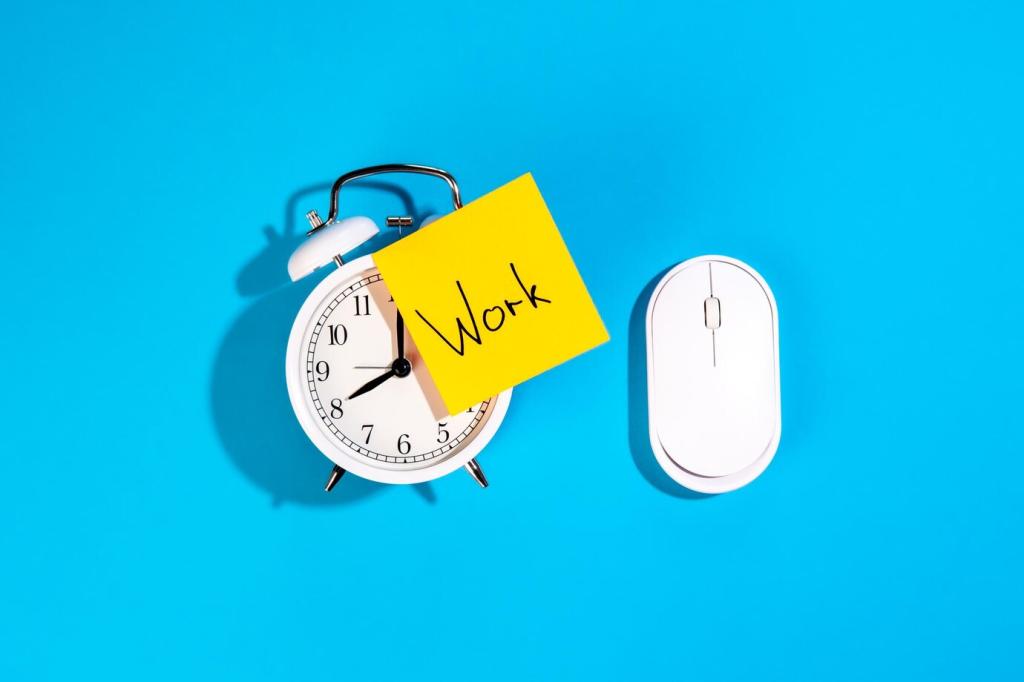Build Your Remote Rhythm
Pick a consistent start time, open your task list, choose your top three outcomes, and write them on a sticky note. A simple ritual beats procrastination and tells your brain, decisively, that it’s time to move.
Build Your Remote Rhythm
Match demanding tasks to your peak energy and lighter tasks to your natural dips. A designer in Lisbon schedules deep work at 9 a.m., admin after lunch, and collaborative chats late afternoon for sustainable momentum.





